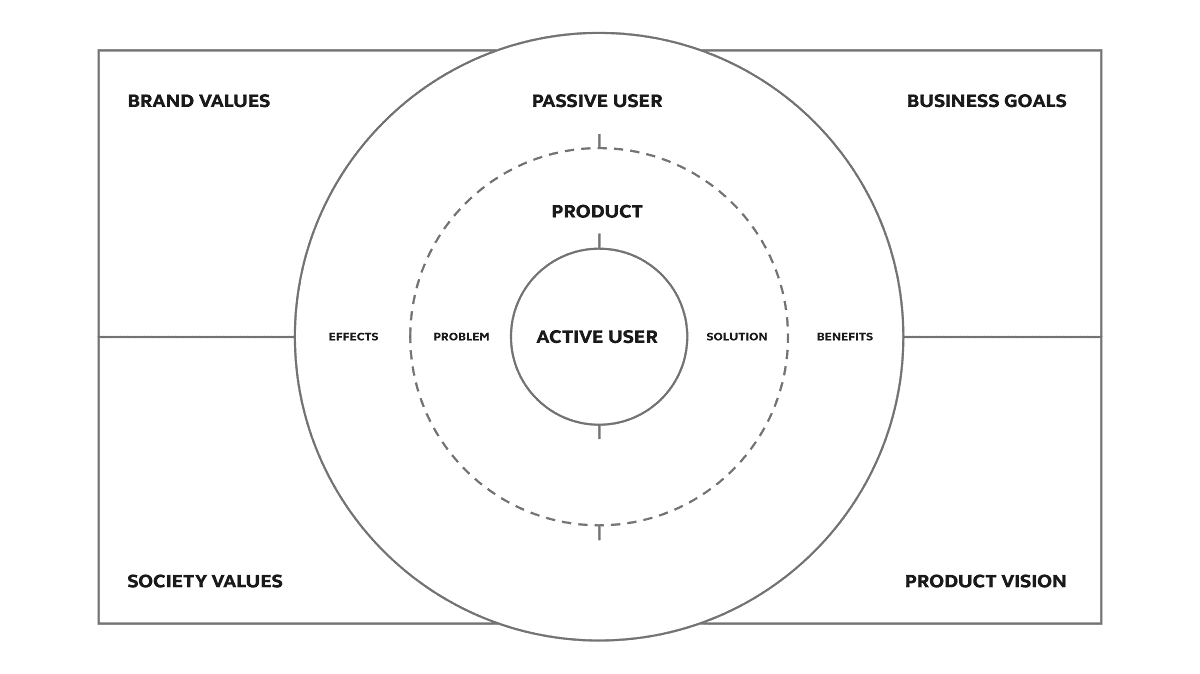Society-Centered Design: Achieving Competitive Advantage through Attitude
Anyone who wants to win and retain customers in the future should align their business model, products and services with social relevance, explains Mutabor CDO Burkhard Müller.

User obsession can quickly become a boomerang
Even companies with strong, purpose-driven mission statements are facing challenges: While AirBnB wants to enable everyone to experience cities authentically with "Anyone can belong anywhere," the service ensures that there is less living space for locals, especially in big cities, and that they can no longer afford to rent. Gorillas is changing the way we do spontaneous shopping. However, by delivering in just ten minutes, they are causing blocked sidewalks and noise around their micro-fulfillment centers, which many residents complain about. Even the best service can fall out of favor if it has a negative impact on society.
Passive users are part of every customer journey
What these examples have in common: All offerings have a passive influence on the lives of third parties. In the current thinking of user-centered design, the active user is at the top of the list - i.e., the person who uses the product and generates sales. Rarely are passive "users" included in the context of the social and ecological perspective. Yet almost every product and every service along the customer journey always has an influence on others. This is exactly where we come in: Society-Centered Design forms the framework to integrate these perspectives into product development from the beginning.
The method case: Society-Centered Design
In order to systematically work on the social impact of products and services, the Mutabor developed a set of methods and tools under the term "Society-Centered Design" that combine classic user-centered design methods with the social perspective of the brand and its target groups. The framework is intended to support both the establishment of the right mindset in the company and the rapid initiation of action, while involving the most important decision-makers and stakeholders. The complex topic of ecological and social responsibility is thus easy to apply and can be approached with clear, comprehensible steps.
Social added value is tomorrow's entrepreneurial success
The basic premise of the concept is that those who treat responsibility for society and economic success as interrelated will be more successful in the long term. But why take the first step before everyone else, as long as the pressure from laws and customers is not yet compelling? The answer: because now is the chance to test and validate concepts with the group of early adopters, in order to immediately catch the critical mass of the mainstream later and not be overrun by it. Because just as the user perspective is a hygiene factor for product success today, it will be the same with the social and ecological perspective in the future. So if you want to win and retain customers in the future, you should start now to align your business model, products and services with social relevance. Bank Tomorrow is setting a good example: by investing its customers' money only in sustainable projects, it provides strong incentives to choose its model over that of a traditional bank.
Steps in Society-Centered Design
Implementing society-centered attitudes in product/service experiences, whether new or existing, requires a holistic approach. The following outlines the broad steps of the Society-Centered Design approach:
- Establish a responsibility-oriented mindset across all hierarchical levels
- Analyze the customer journey and identify active/passive users
- Derive recommendations for action in an expert review
- Derivation of measurable KPIs and formulation of guidelines for product teams
- Build, Test & Learn: Development and/or optimization with focus on early market
How do you convince the decision-makers?
Especially with digitalized products and services, most decisions are made on the basis of KPIs. Just like branding or design, social impact and its influence on the company's success is rarely measured. At Mutabor, we define KPIs right from the start that can be measured, tracked sustainably and successively optimized. In this way, supposed idealism becomes quantifiable for the business - and thus a competitive advantage for tomorrow.
* Burkhard Müller is Chief Digital Officer at Mutabor. Over the past 20 years, he has led transformation projects for companies such as Bosch, Migros, Swatch and Vodafone.












